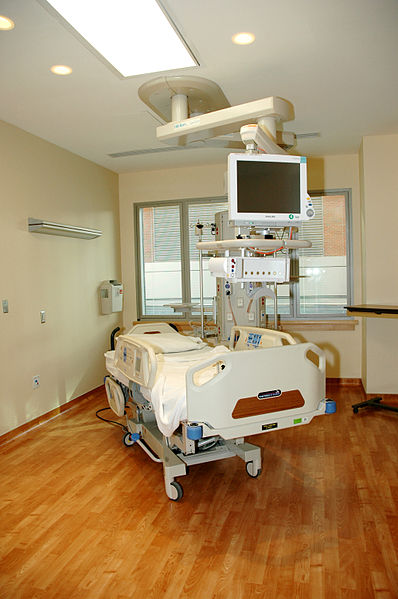
Working with intensive care doctors, engineers at Oxford University have developed a new system to improve the way patients are monitored, and spot much sooner when someone is deteriorating so that their care can be intensified.
At the same time, the system, which uses an iPad to log, analyse and share patient vital signs with key healthcare workers, can also tell when patients are improving faster than average so that they can be discharged more quickly, saving money.
James Harrison went to see the Electronic Early Warning system, as it's known, in action.
Nurse - Hello, there. I'm just going to check your blood pressure. It's going to go around here. It's going to squeeze you tight, only for a few seconds.
James - Since 2011, the vital signs of thousands of patients from Oxford and Banbury are now routinely recorded using paper-based track and trigger charts which help identify when medical care needs to be escalated. These charts have already improved patient outcomes as problems are spotted more quickly. But the paper-based system is by no means perfect. So, a research team led by Professor Lionel Tarassenko at the University of Oxford's Institute of Biomedical Engineering has come up with an electronic version of the track and trigger system.
Lionel - So, we've developed a system based on barcode scanners because all patients now have barcodes for identification. By 3 or 4 seconds, the patient is scanned, the nurse is scanned and she can do the observations. Having barcode in the patient and having barcode at our own identification, she can use this iPad, mounted on a trolley, right next to where the blood pressure monitors and the heart monitors on a position to enter this information. What she will do to identify how poorly the patient might be, is to take 5 or 6, or sometimes 7 of these observations. Our computer system produces a score of how normal the observation is for a typical adult patient. You build the score and if the score, which is a score of abnormality, is above certain threshold, then there's an alert and there's an escalation of care.
James - With the prototypes in place, the team discovered that after only 2 or 3 patient observations, nurses were picking up scores high enough to trigger an alert. Meaning that they weren't having to waste vital time taking other measurements. As well as saving time by the bedside, the system was also engineered to feed information into the patient's electronic record, giving doctors ready access to essential information which could lead to earlier interventions which in some cases could be the difference between life and death. There are also cost savings associated with electronic track and trigger. If a patient could be helped back to health more quickly, aided by more accurate information, the increasingly valuable hospital bed can be freed up for somebody else.
Lionel - If a patient is really progressing well and faster than the average patient with their condition or after that operation is, there is absolutely no reason they should be discharged early. The most expensive part of healthcare is a hospital bed.
James - Professor Tarrasenko and his fellow researchers are hopeful that within 10 years, the majority of acute hospitals will have a system like this on their wards, an achievement that could prove revolutionary in the way medical teams monitor and record the vital signs of seriously ill patients.
- Previous Graphene in mass market manufacturing
- Next Optimal crop irrigation










Comments
Add a comment